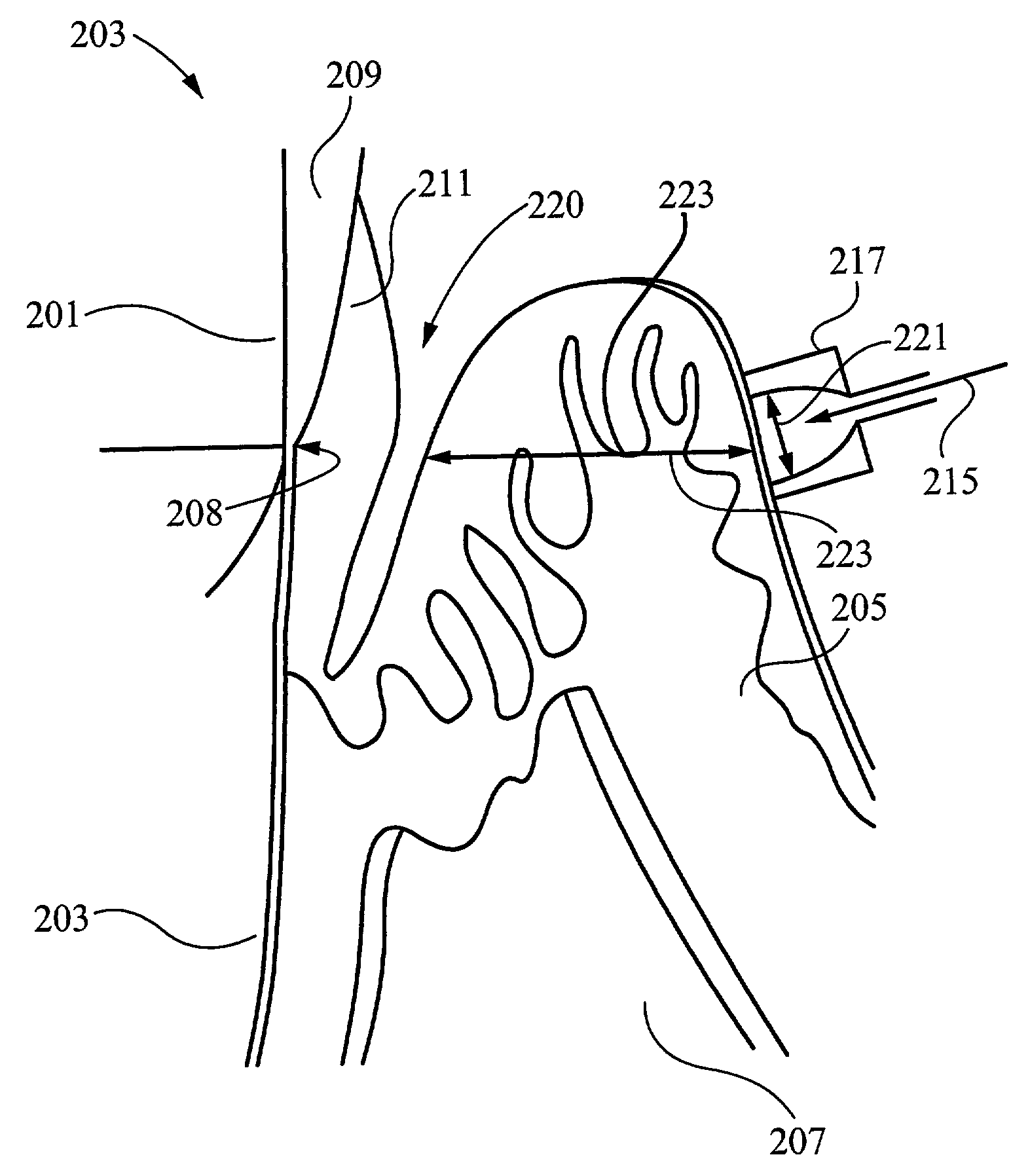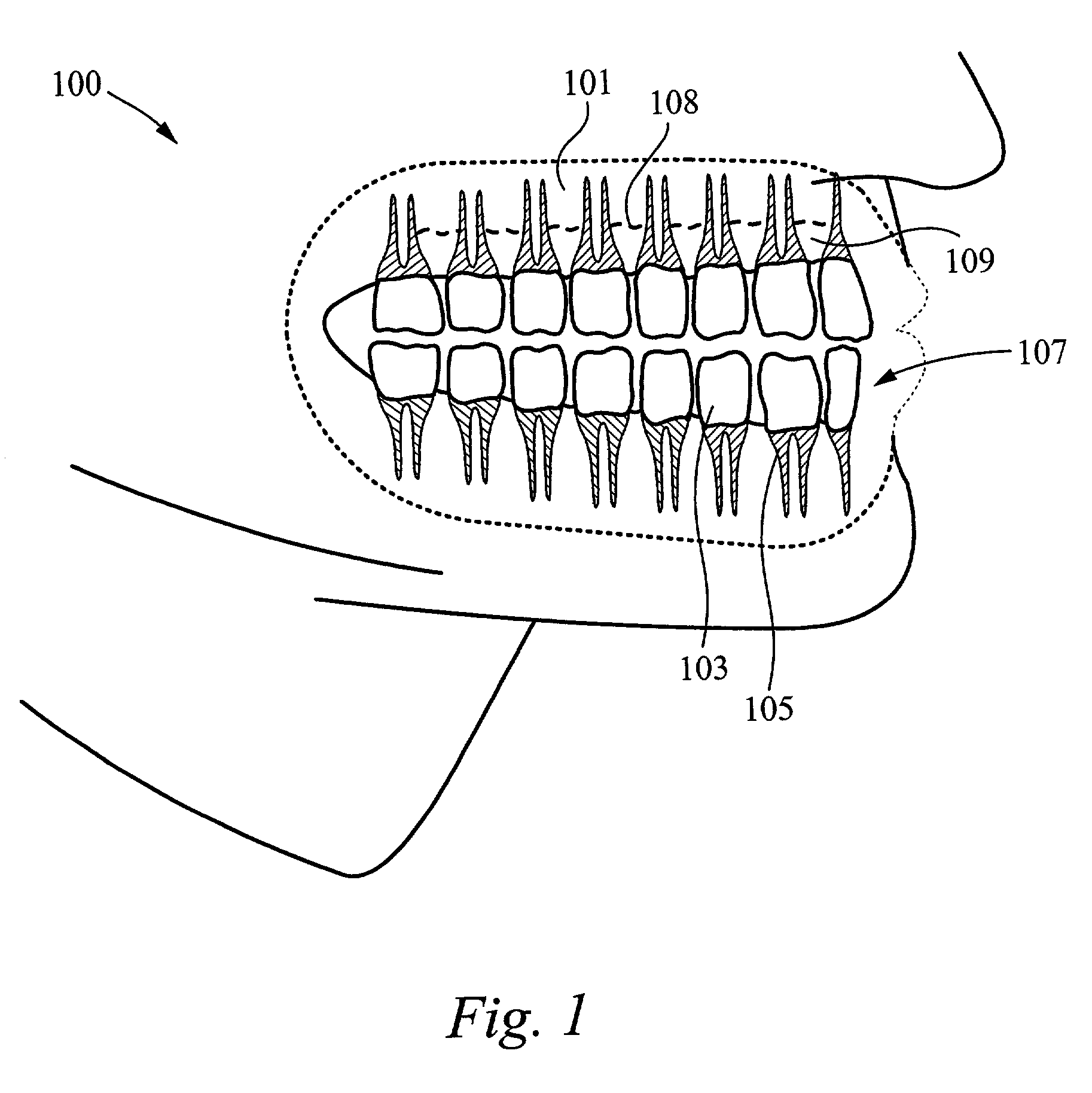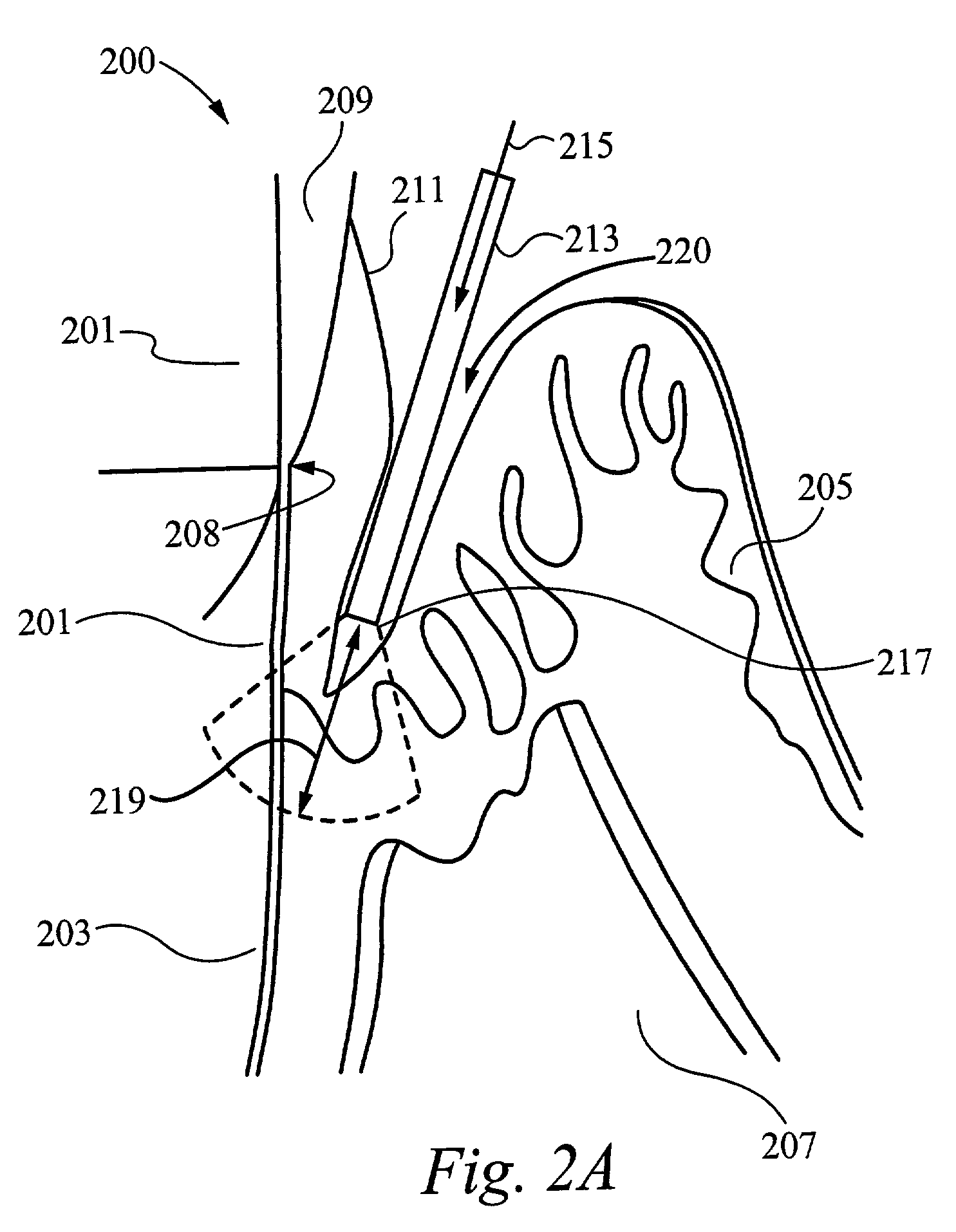Method of periodontal laser treatment
- Summary
- Abstract
- Description
- Claims
- Application Information
AI Technical Summary
Benefits of technology
Problems solved by technology
Method used
Image
Examples
Embodiment Construction
[0033]FIG. 1 illustrates a schematic representation of human dentition 100. Teeth 103 in an oral cavity 107 are embedded within surrounding periodontal tissue 101. The teeth 103 are attached to a jaw bone (not shown) through root structures 105. In advanced cases of periodontal disease, the periodontal tissue 101 detaches from portions of the root structures 105, as indicated by the dotted lines 108, thereby forming periodontal pockets and / or exposing sensitive portions 109 of the root structures 105. Late stages of periodontal disease and result in the complete detachment of the periodontal tissue 101 from the underlying root structures 105 and ultimately result in the loss of teeth 103, as described below.
[0034]FIG. 2A shows a cross-sectional view 200 of a periodontal pocket 220 and surrounding periodontal tissues. With periodontal disease, the soft periodontal tissue 205 become detached or separated from the cementum 203, which is a layer of hard tissue on the outer surface of th...
PUM
 Login to View More
Login to View More Abstract
Description
Claims
Application Information
 Login to View More
Login to View More - R&D
- Intellectual Property
- Life Sciences
- Materials
- Tech Scout
- Unparalleled Data Quality
- Higher Quality Content
- 60% Fewer Hallucinations
Browse by: Latest US Patents, China's latest patents, Technical Efficacy Thesaurus, Application Domain, Technology Topic, Popular Technical Reports.
© 2025 PatSnap. All rights reserved.Legal|Privacy policy|Modern Slavery Act Transparency Statement|Sitemap|About US| Contact US: help@patsnap.com



